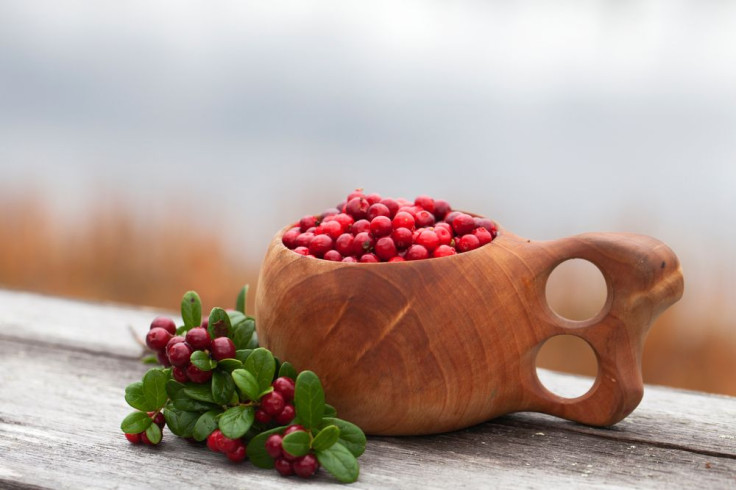Açaí Berries Tied To Weight Gain, Lingonberries Tied To Weight Loss: Scandinavian Staple Dethrones Brazilian 'Super Berry'

When it comes to weight loss, the widely praised açaí berry may have met its match in the lesser known lingonberry, a staple of Scandinavian cuisine that appears to block the consequences of a high-fat diet.
Dr. Karin Berger, a professor at Lund University in Sweden and senior author of the new study, said in a press release that the project was initially conceived as a way to test how lingonberries, bilberries, blackcurrants, and other Nordic berries stack up against the severely hyped Brazilian açaí. Berger and colleagues theorized that the best candidate would approximate the health effects of the purported “super berry.” “Instead, the opposite happened,” she said. “In our study, the açai berries led to weight gain and higher levels of fat in the liver.”
Lingonberries, on the other hand, appeared to block these consequences. The study, which is published in the Journal of Nutrition and Metabolism, shows how mice fed a high-fat diet gain almost no weight whatsoever if their diet is supplemented with the Scandinavian berry. Similar effects were observed when the mice’s diets were given in combination with blackcurrants and bilberries. Of the eight berries studied, the açaí berry came in dead last.
Aside from halting weight gain, lingonberries were also tied to lower cholesterol and blood sugar levels. For people with an elevated risk of developing metabolic disorders like diabetes, this is great news, as it illuminates a cheap strategy to keep such chronic complications at bay. With the incidence of adult-onset diabetes on the rise, these types of simple, everyday interventions are becoming more and more important.
Lingonberries and Your Health
Why, then, has no other study looked at the health benefits of lingonberries? Several reasons may account for the lack of research, but the authors believe that it ultimately comes down to the fact that the berries aren’t really eaten anywhere else. “[It’s] probably because lingonberries are mainly eaten in Scandinavia,” Lovisa Heyman, lead author and doctoral candidate, explained. “At international conferences, I always have to start by explaining what they are, and showing the audience a jar of them.”
The current study adds to the growing series of efforts to identify cost-effective ways to rein in the incidence of type 2 diabetes and obesity, two metabolic disorders that currently affect millions of Americans. Another example is a 2014 study from the University of East Anglia in the UK, in which researchers show that diabetes prevention may be as easy as consuming moderate amounts of chocolate and red wine in combination with a sensible diet. Similarly, a study from last year suggests that diabetics may benefit from eating a single large meal a day.
Still, further research is necessary, as the amount of lingonberries used in the study would make most dieters sick of the supplement within days. “Up to 20 percent of our mice’s diet was lingonberries,” Berger explained. “It isn’t realistic for humans to eat such a high proportion. However, the goal is not to produce such dramatic effects as in the ‘high-fat’ mice, but rather to prevent obesity and diabetes by supplementing a more normal diet with berries.”
Source: Heyman L, Axling U, Blanco N, Berger K, et al. Evaluation of Beneficial Metabolic Effect of Berries in High-Fat Fed C57BL/6J Mice. Journal of Nutrition and Metabolism. 2014.



























